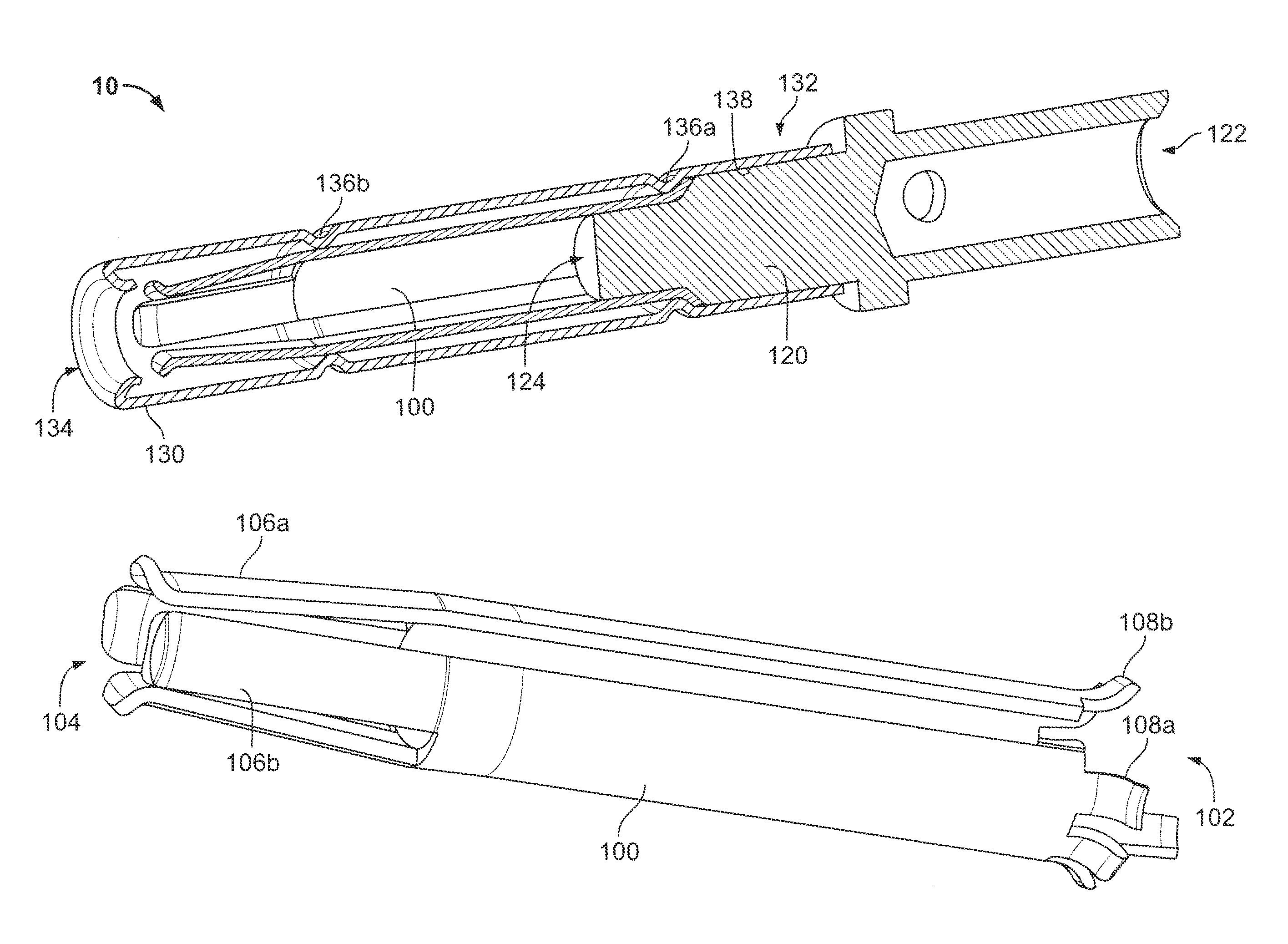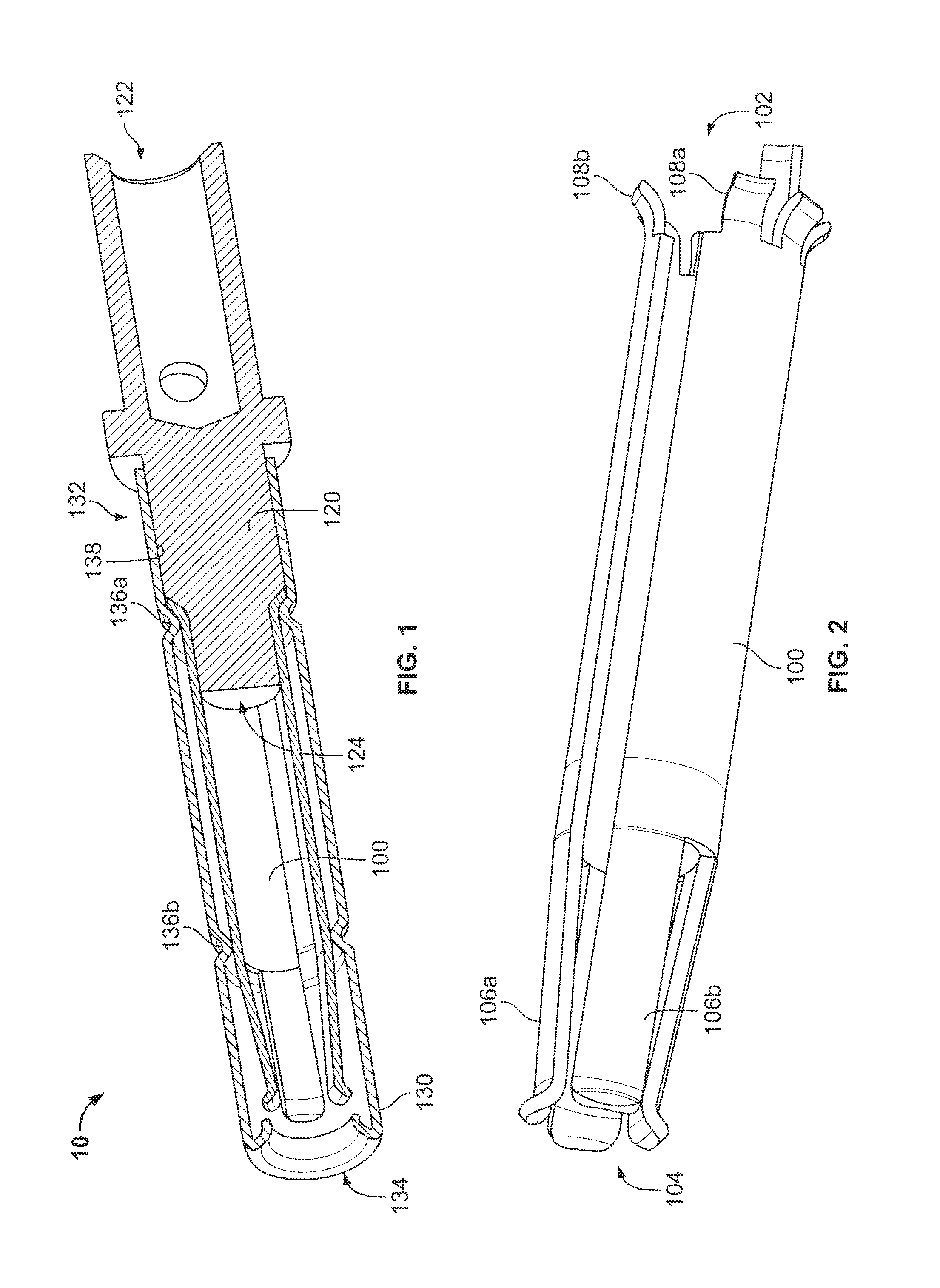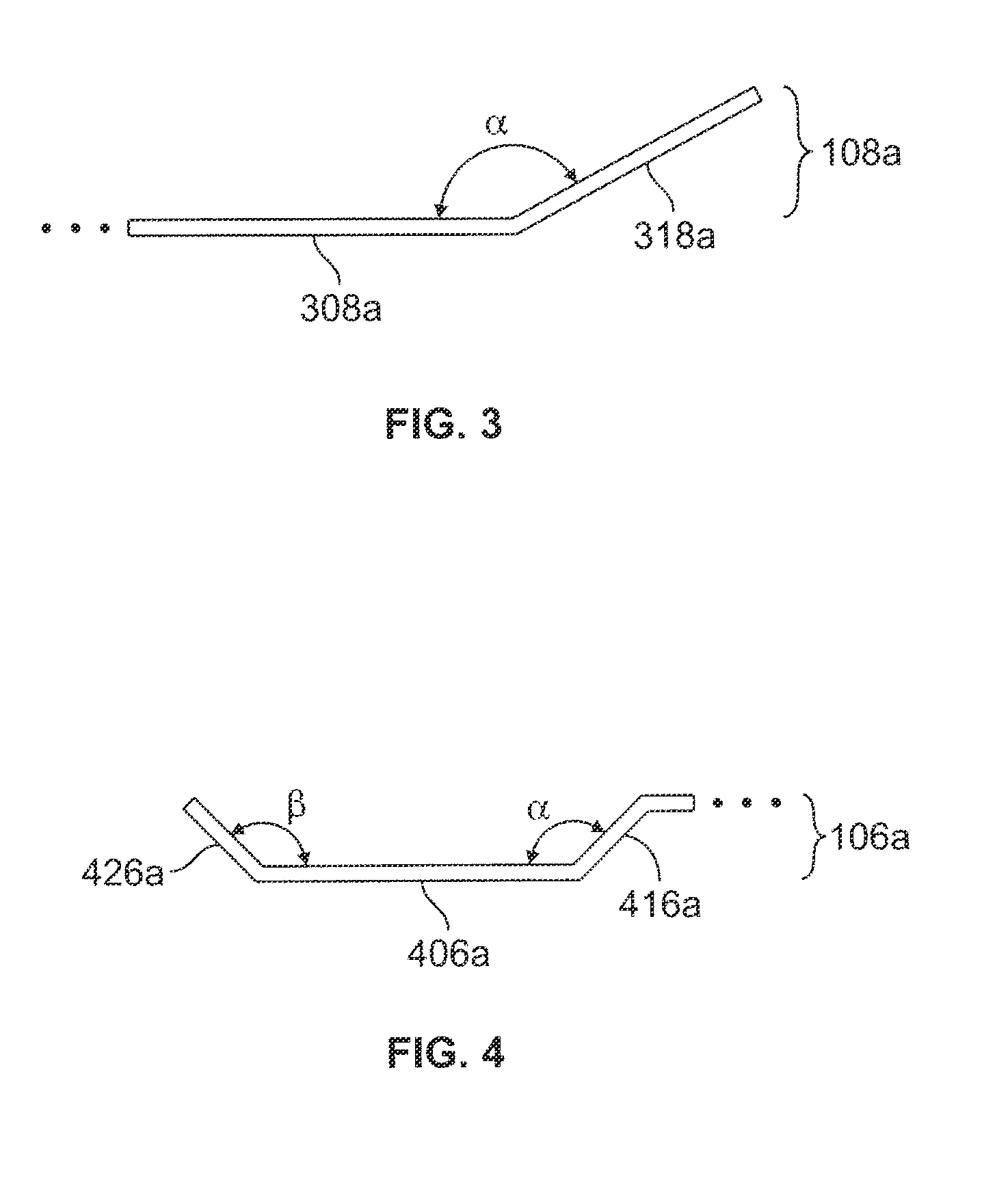Multi-piece socket contact assembly
a socket and socket body technology, applied in the direction of coupling contact members, coupling device connections, electrical devices, etc., can solve the problem of a greater frictional engagement between the spring and the socket body, and achieve the effect of preventing (or reducing) the movement of the spring body
- Summary
- Abstract
- Description
- Claims
- Application Information
AI Technical Summary
Benefits of technology
Problems solved by technology
Method used
Image
Examples
Embodiment Construction
[0024]The present invention provides a multi-piece socket contact assembly that functions to reduce movement of a spring body in relation to a socket body during Periods of vibration. In the detailed description that follows, like element numerals are used to describe like elements illustrated in one or more figures.
[0025]A socket contact assembly in accordance with one embodiment of the present invention is shown in FIG. 1. Specifically, the assembly 10 includes a socket body 120 that is formed out of a first material, and preferably out of a single piece of the first material. While the first material can be any conductive material, it is preferably one that is very ductile, and allow permanent deformation without cracking (e.g., brass, leaded nickel copper, gold, etc.). In one embodiment of the present invention, the socket body includes a distal end 122 and a proximal end 124, wherein the proximal end is solid and has a substantially circular outer surface, and the distal end 12...
PUM
| Property | Measurement | Unit |
|---|---|---|
| circumference | aaaaa | aaaaa |
| angle | aaaaa | aaaaa |
| modulus of elasticity | aaaaa | aaaaa |
Abstract
Description
Claims
Application Information
 Login to View More
Login to View More - R&D
- Intellectual Property
- Life Sciences
- Materials
- Tech Scout
- Unparalleled Data Quality
- Higher Quality Content
- 60% Fewer Hallucinations
Browse by: Latest US Patents, China's latest patents, Technical Efficacy Thesaurus, Application Domain, Technology Topic, Popular Technical Reports.
© 2025 PatSnap. All rights reserved.Legal|Privacy policy|Modern Slavery Act Transparency Statement|Sitemap|About US| Contact US: help@patsnap.com



